Fuseli And The Modern Woman: Fashion, Fantasy, Fetishism // Helen Saunders: Modernist Rebel – The Courtauld Gallery, London
Two exhibitions at the Courtauld Gallery which deal with modern women, but in very different ways: as artist or as muse, as private pleasure or as active participant in new art movements.
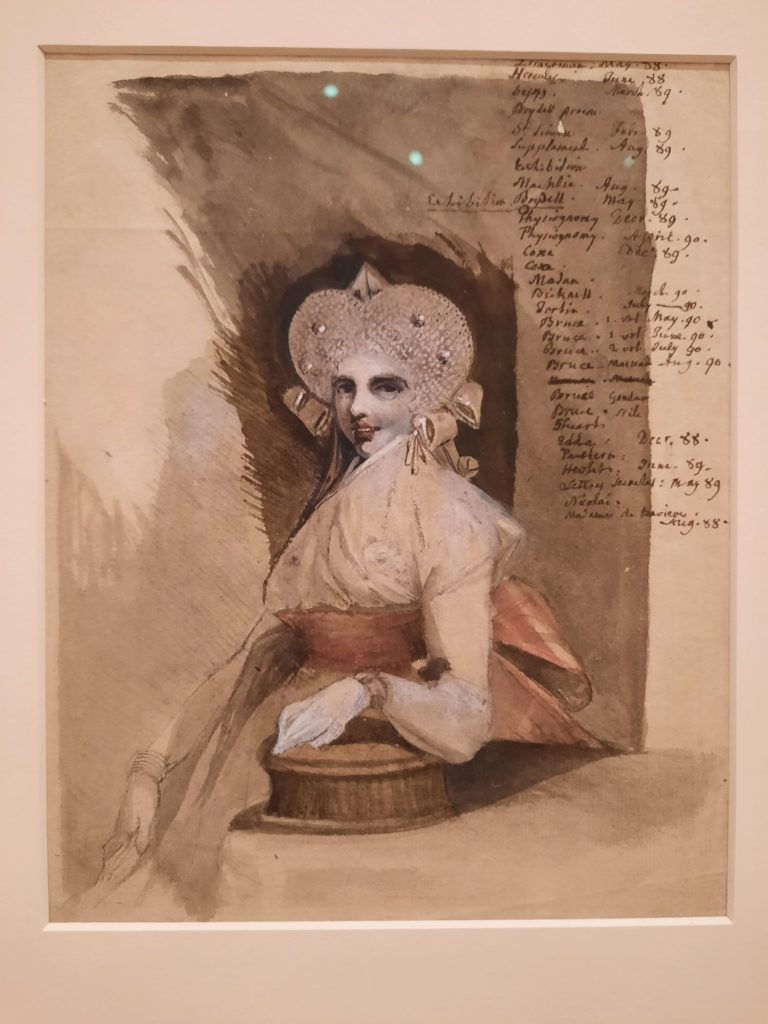
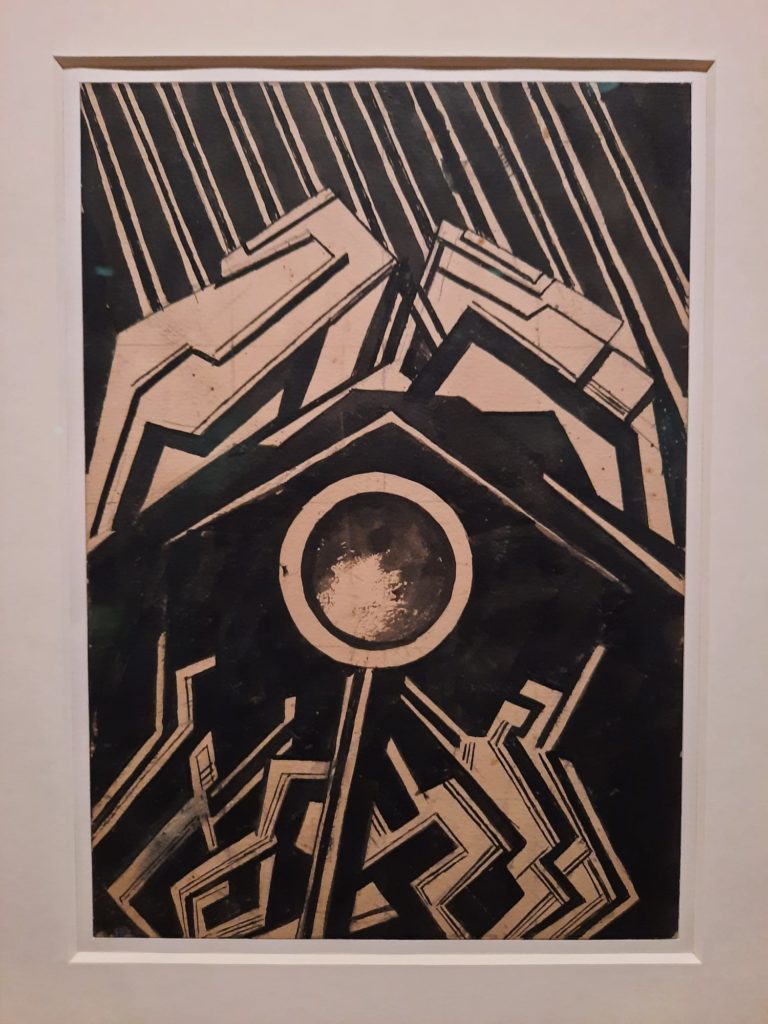
The Courtauld: Come For The Gift Shop, Stay For The Art
The Salterton Arts Review has a bit of a pre-Christmas rush on at the moment. The holidays are always a busy time of year for those who celebrate, what with festive get-togethers, gift shopping and so on. And this year I have the dual additional time pressures of a couple of trips away from London (more coming soon on these!) and trying to avoid Covid before seeing my family over the Christmas break. And yet… there’s a really good season of exhibitions on in London at the moment, which I would also like to see…
Luckily the Salterton Arts Review is not afraid to buck the trend. I’ve been attempting to get to a few exhibitions and evenings at the theatre where I can, but staying resolutely masked up. It’s not foolproof, but I successfully avoided Covid for about two years in this way so it’s something. Anyway – on a recent trip into Central London we needed to pick up a birthday gift, and I didn’t particularly want to go to the West End department stores to do that. “I know,” I thought, “what about the gift shop at the Courtauld? Right by where the bus drops us off, and plenty of nice things in there!” You can see where I’m going with this – it’s a short step from the gift shop to the ticket counter to just see one little exhibition while we’re here. Maybe two…
Because these exhibitions are so small, and don’t feature artists I’m knowledgeable about, I’m not sure I would have made it to either without this pretext. There’s a loose connection between them, but really each is stand-alone. Fuseli and the Modern Woman: Fashion, Fantasy, Fetishism is a special-focus look at the drawings of Henry Fuseli and what they tell us about what made him tick. Helen Saunders: Modernist Rebel shines a light on a little-known member of the short-lived Vorticist movement. Let’s look now at each of them on its own merits.
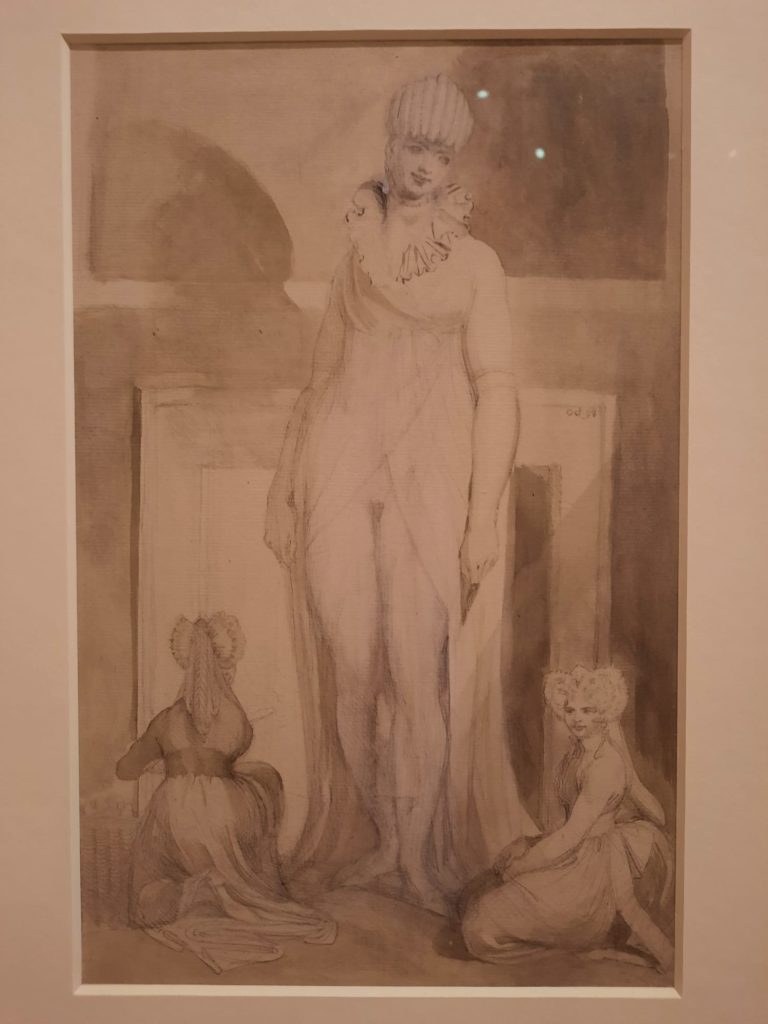
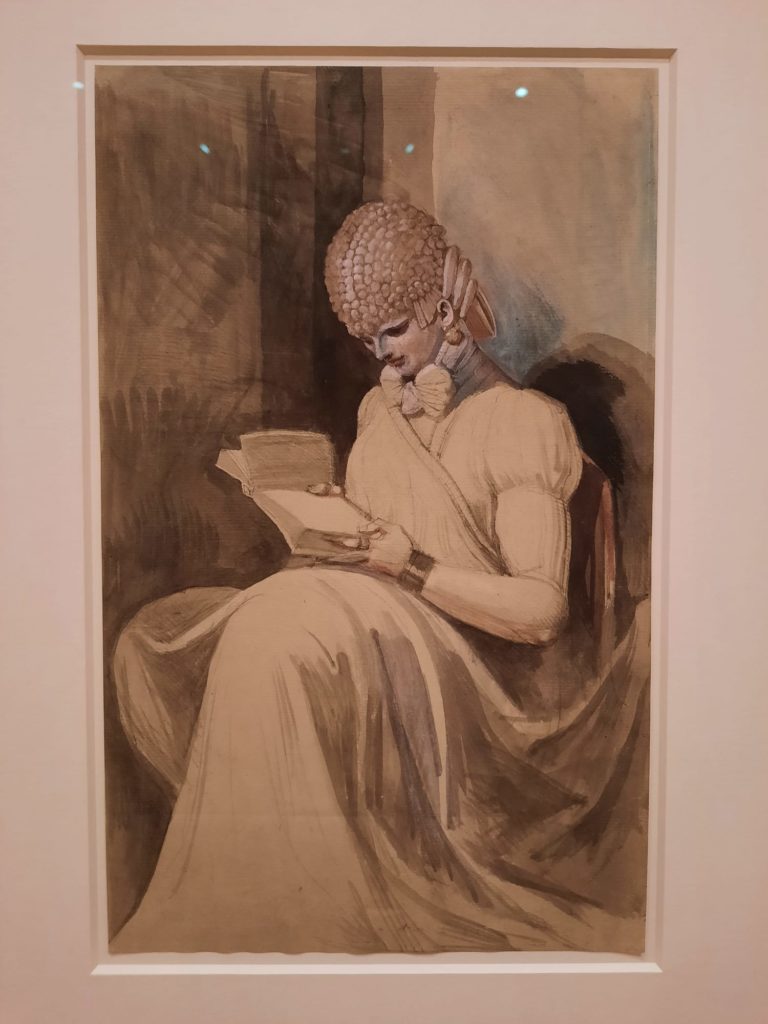
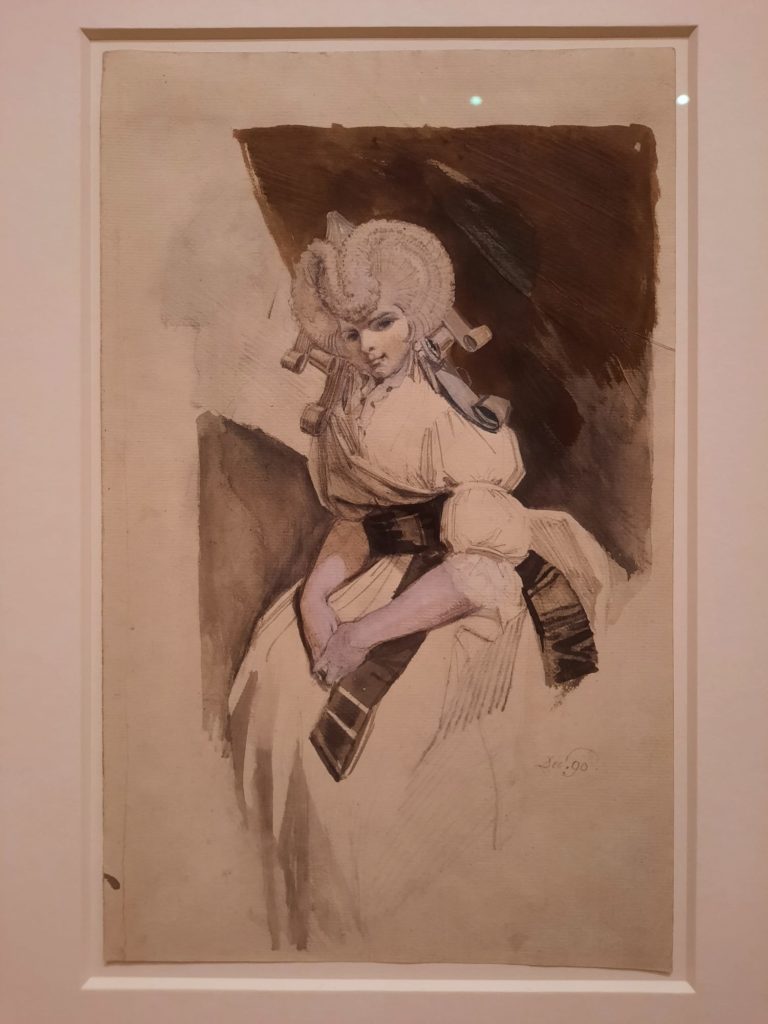
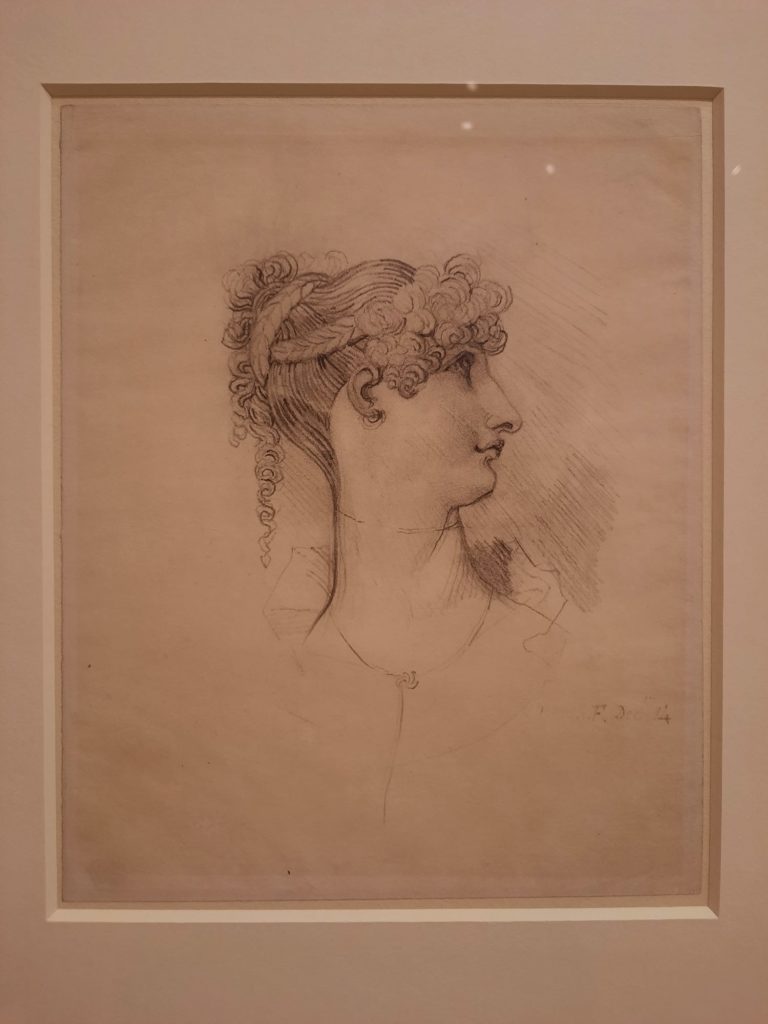
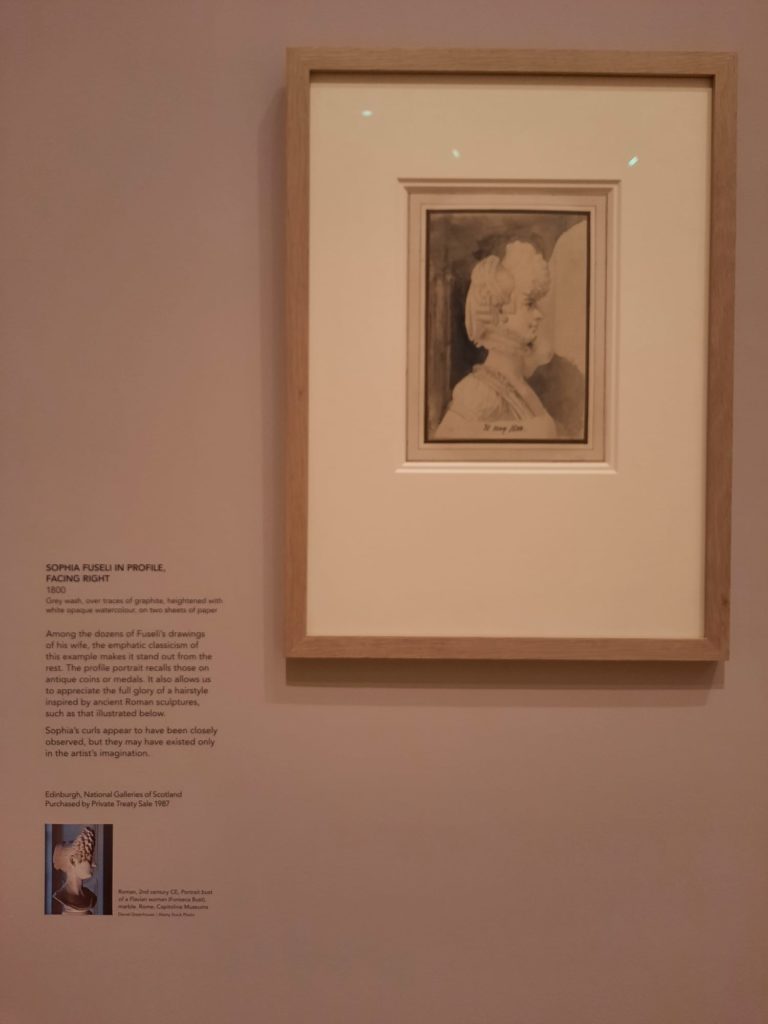
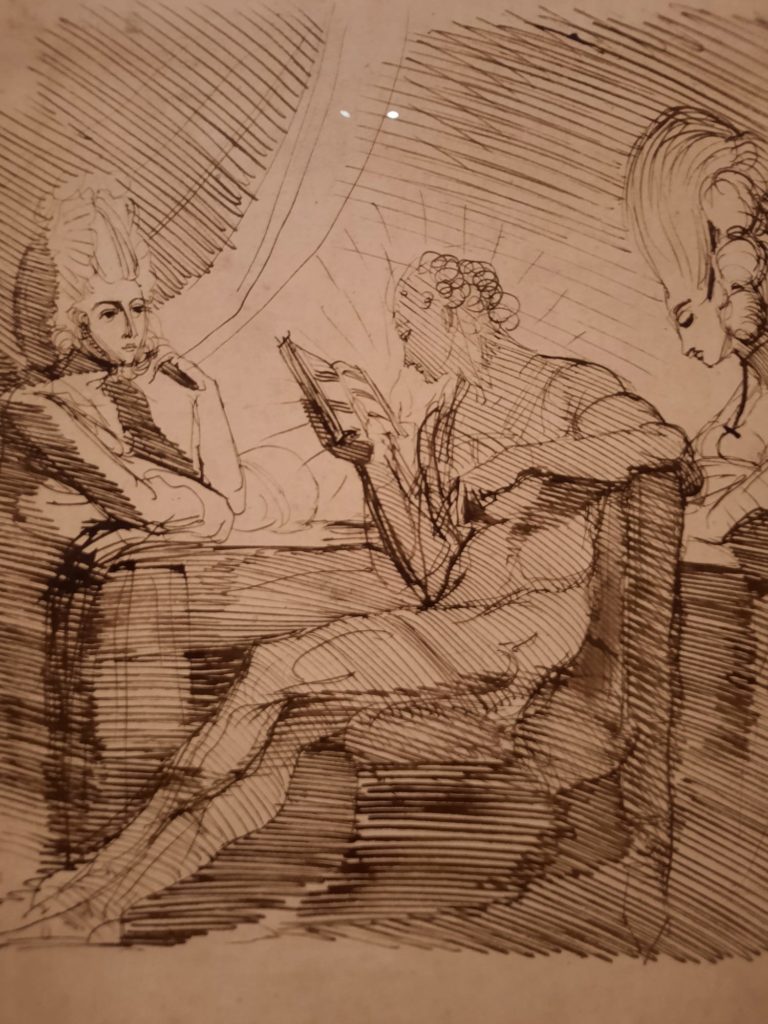
Fuseli And The Modern Woman
If the name Henry Fuseli doesn’t ring any bells, this image might. Fuseli was a Swiss painter, born Johann Heinrich Füssli in 1741. As a result of a vendetta by a powerful family he had to leave Switzerland as a young man. He travelled extensively: in England he met Sir Joshua Reynolds who encouraged his career in art. Eventually he moved to England and held several posts at the Royal Academy. At the time the RA was based at Somerset House (home now to the Courtauld) so this exhibition is something of a homecoming.
As an artist he is an interesting figure. He particularly liked depicting the supernatural (like The Nightmare, which I linked above). Perhaps because he started painting in oils at age 25, he didn’t subscribe to the usual techniques or fashions. He created far more works than he exhibited, and had some interesting techniques. One involved drawing a couple of points on a sheet of paper, and contorting the poses of his figures to meet them.
This exhibition falls under the category of works created but not exhibited by Fuseli. He had a longstanding fascination with women’s fashions, particularly elaborate hairstyles. A skilled draughtsman, he depicted scenes of varying eroticism with great care. In an interesting parallel with our own times, Fuseli lived in a period where unrest and instability manifested partly in anxieties about gender, identity and sexuality. These drawings, completed for his own purposes or for limited male audiences, are an insight into this process.
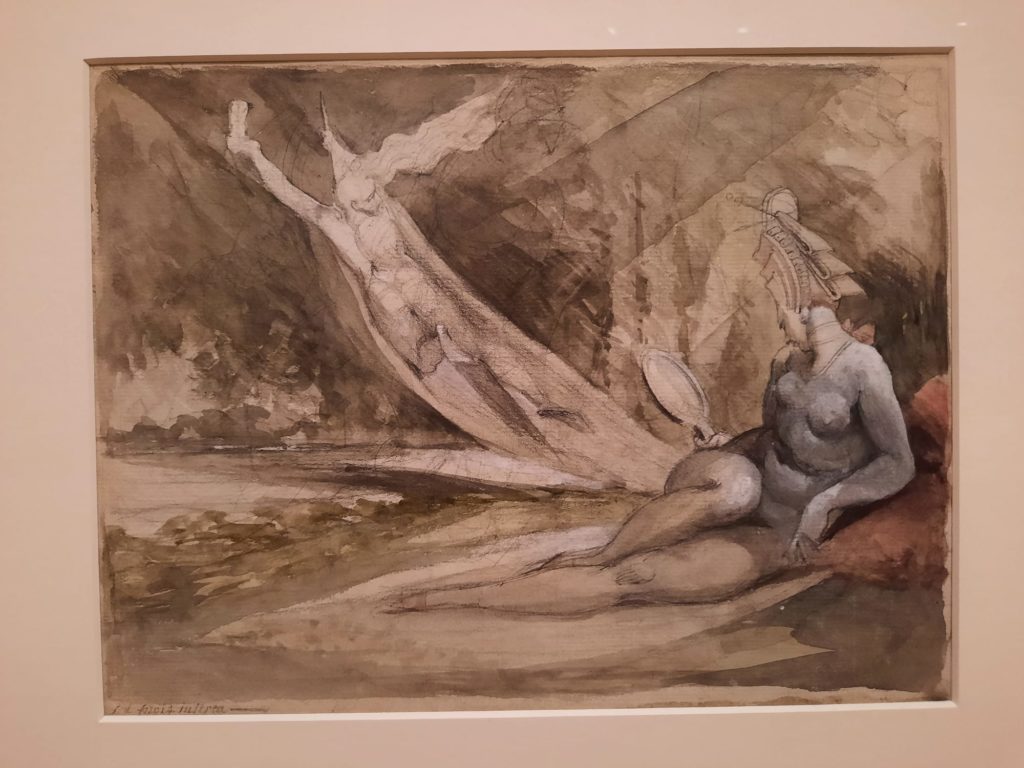
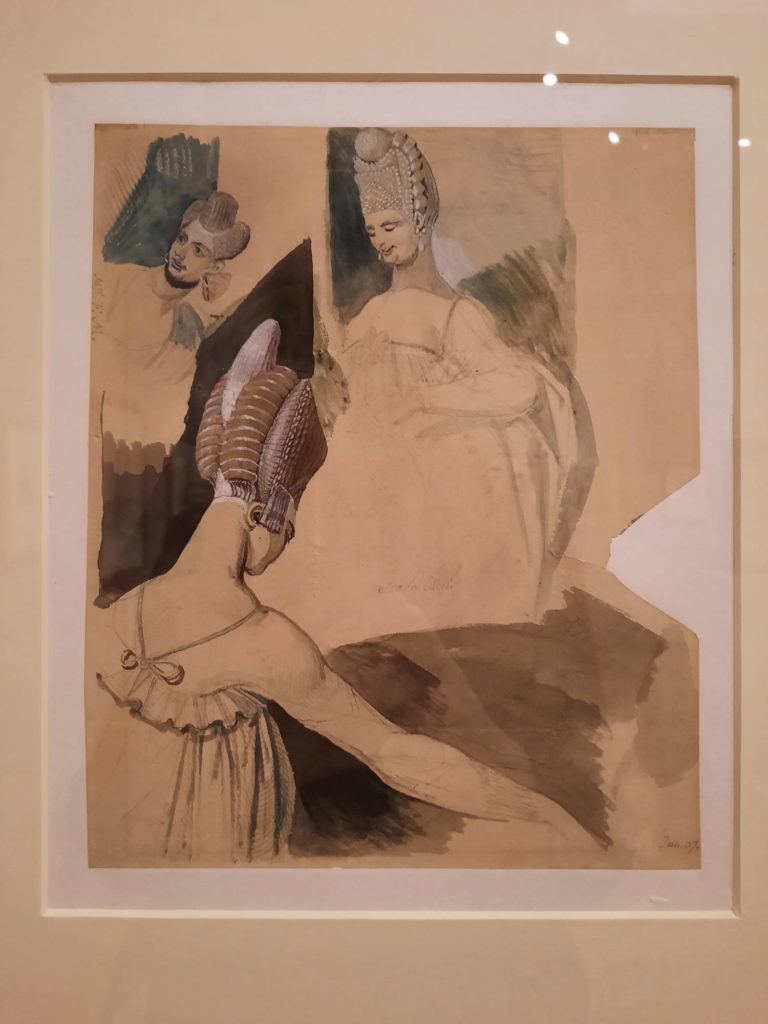
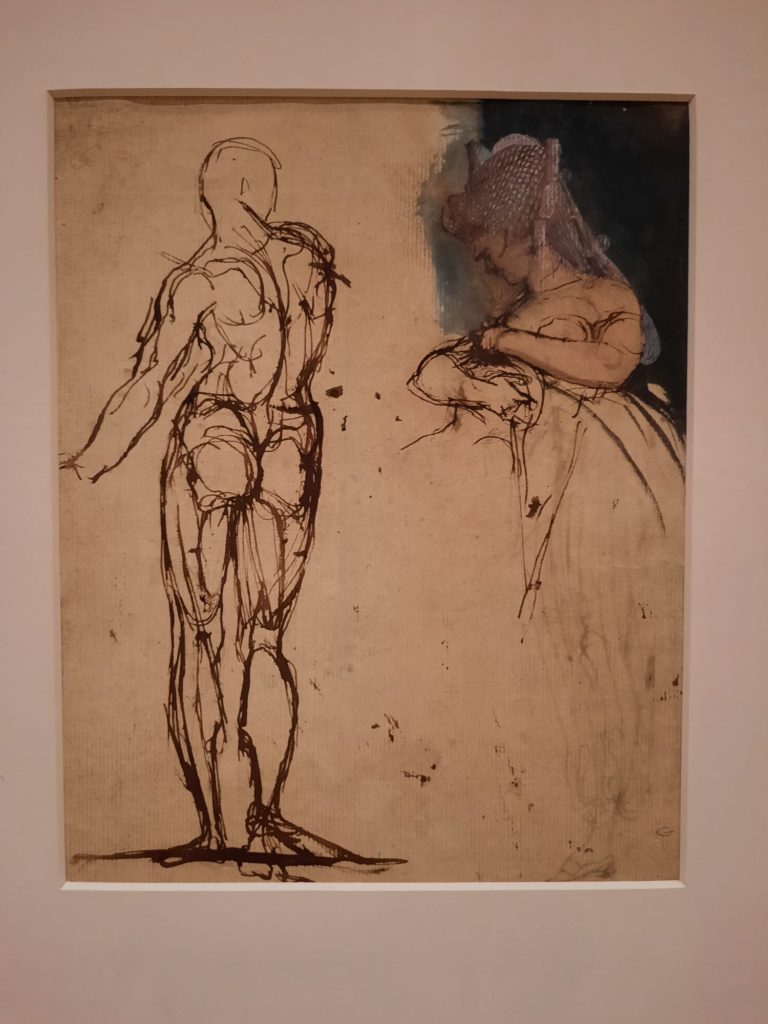
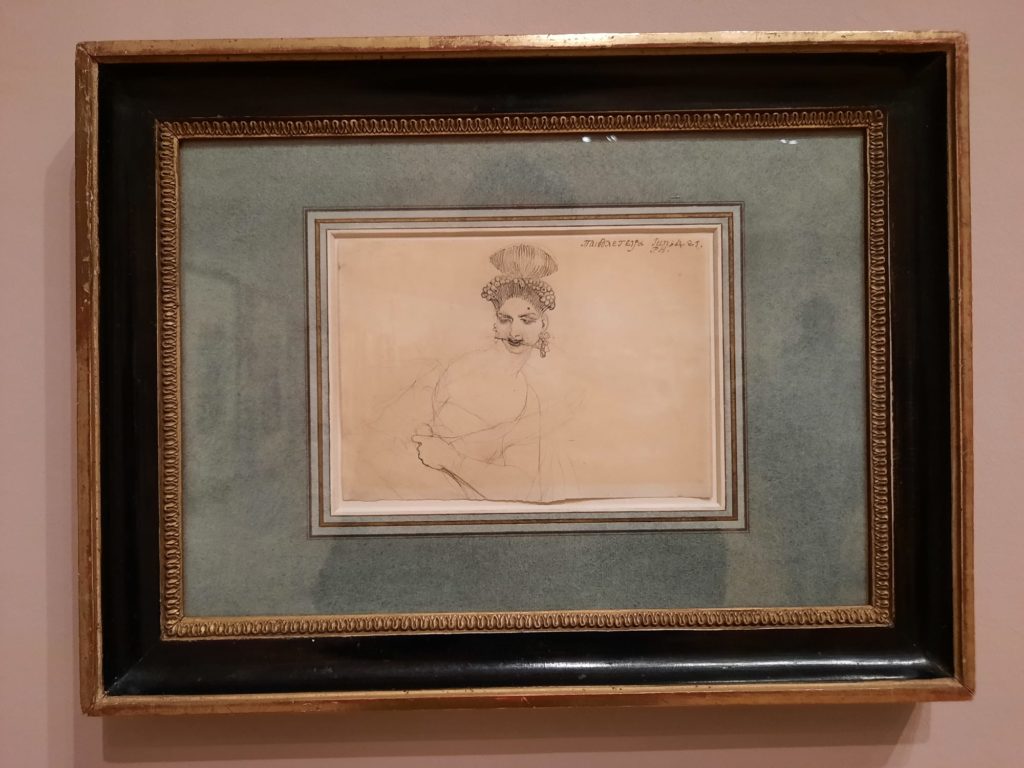
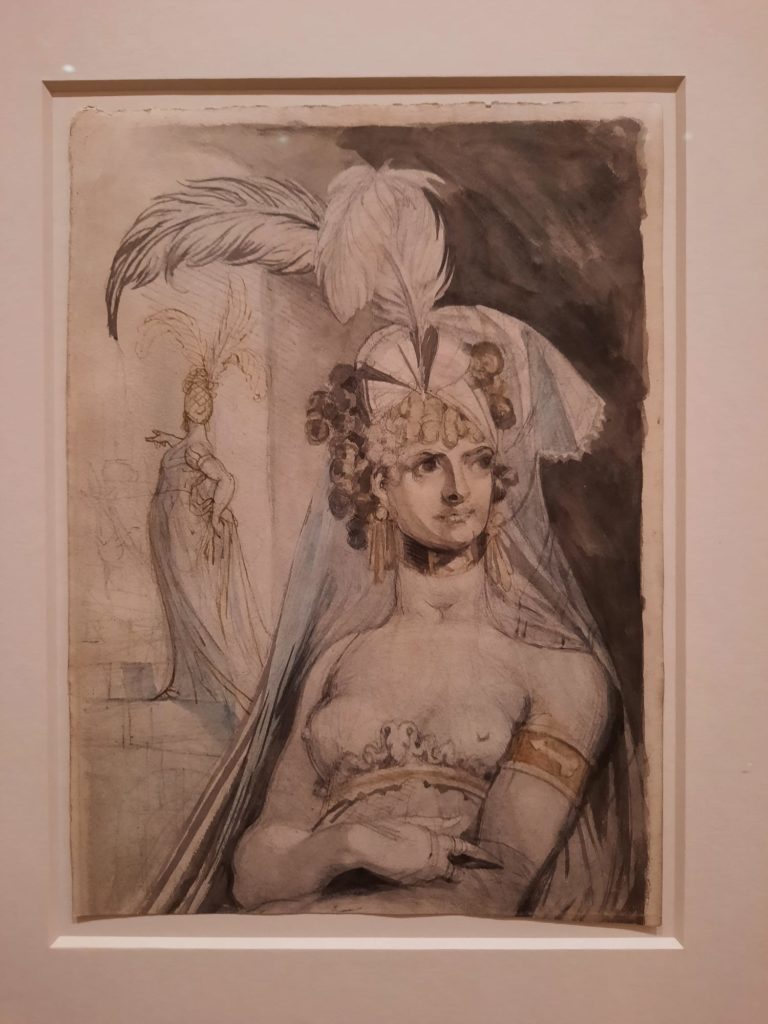
Fashion, Fantasy, Fetishism
It’s interesting when historic artists subvert our expectations like this. I mean sure, we might guess from The Nightmare that Fuseli had a vivid imagination and maybe a kinky side. But this interest in depicting modern women has such a clear fetishistic element that it seems surprising so many examples survive. Many of them are tame enough, but others would definitely have been considered immoral at the time. I wonder what he would have thought of having them all on display like this in his former home?
Although the Courtauld does not shy away from the sexualised content and intent, the subject matter is also treated in a very straightforward manner. We are to admire the technical skill of the works, and consider what they tell us about the times Fuseli lived in. There is an interesting visual juxtaposition here as well. Perhaps this is down to the period, or the fact that the exhibition consists of drawings. But the soft wall colour and delicate nature of the works belie what’s really going on here. It’s a rather interesting viewing experience.
I think ultimately the appeal of this exhibition is much narrower than others I’ve seen at the Courtauld this year. What drew me to it was reading a biography of Percy Bysshe Shelley earlier this year: Fuseli’s works seem to have the same sense of the dark, erotic, passionate side of Romanticism. It’s a period I know little about so was interested to learn more. If you’ve found this review compelling then you may also want to check it out.
Salterton Arts Review’s rating: 3.5/5
Fuseli and the Modern Woman: Fashion, Fantasy, Fetishism on until 8 January 2023
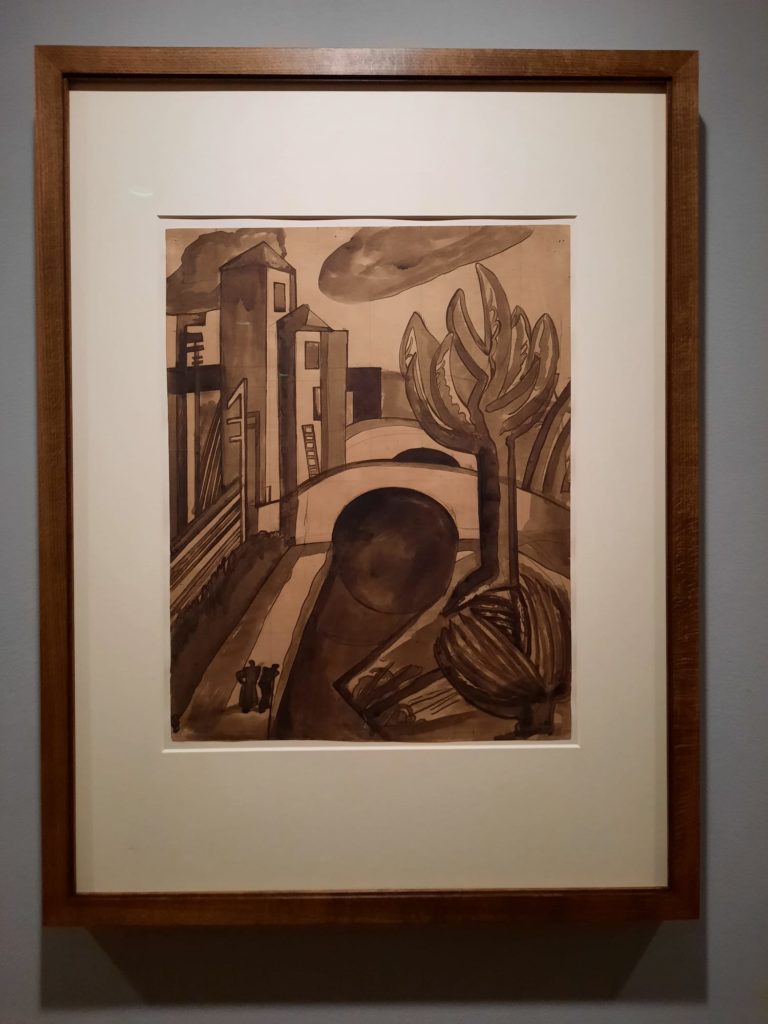
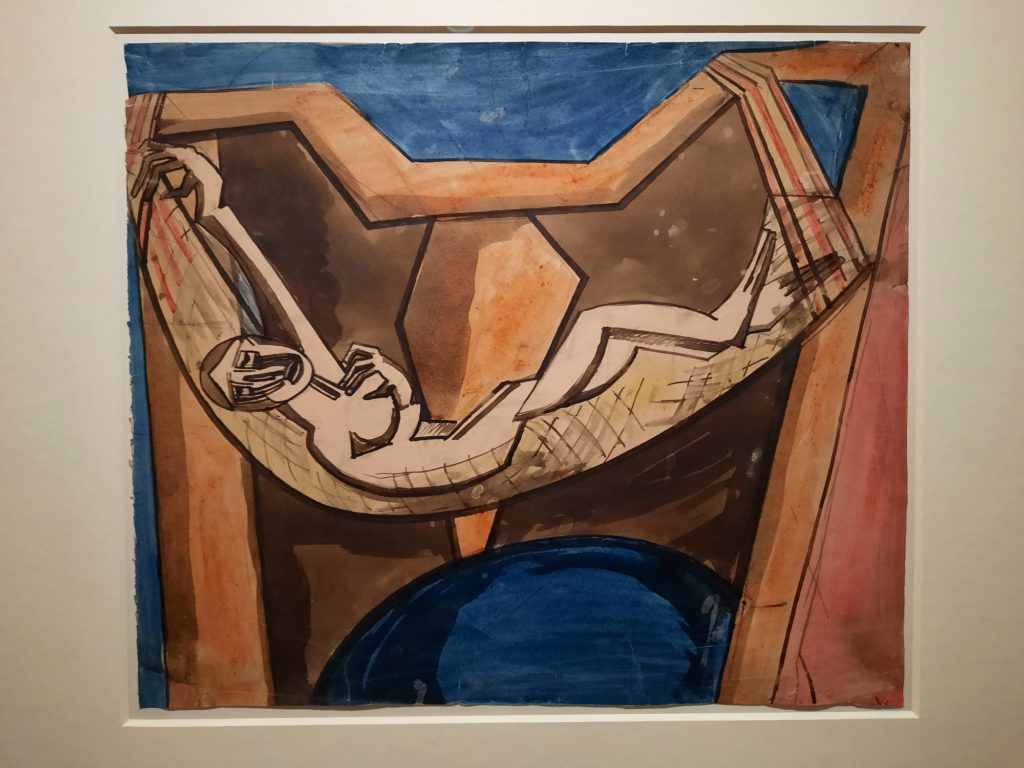
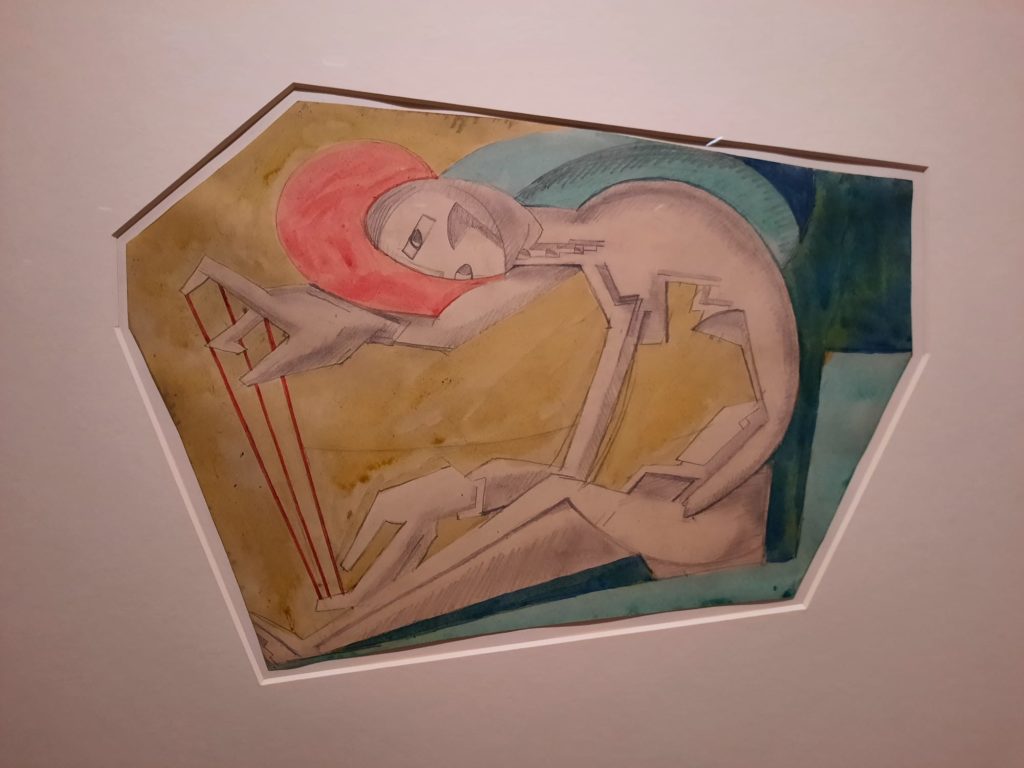
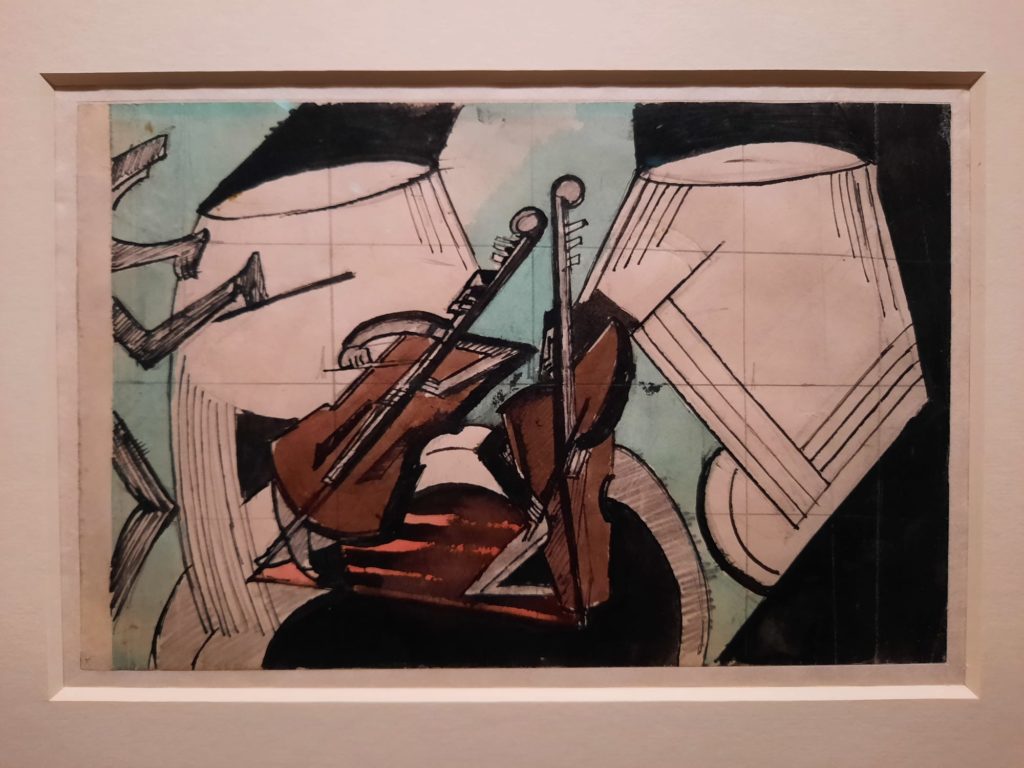
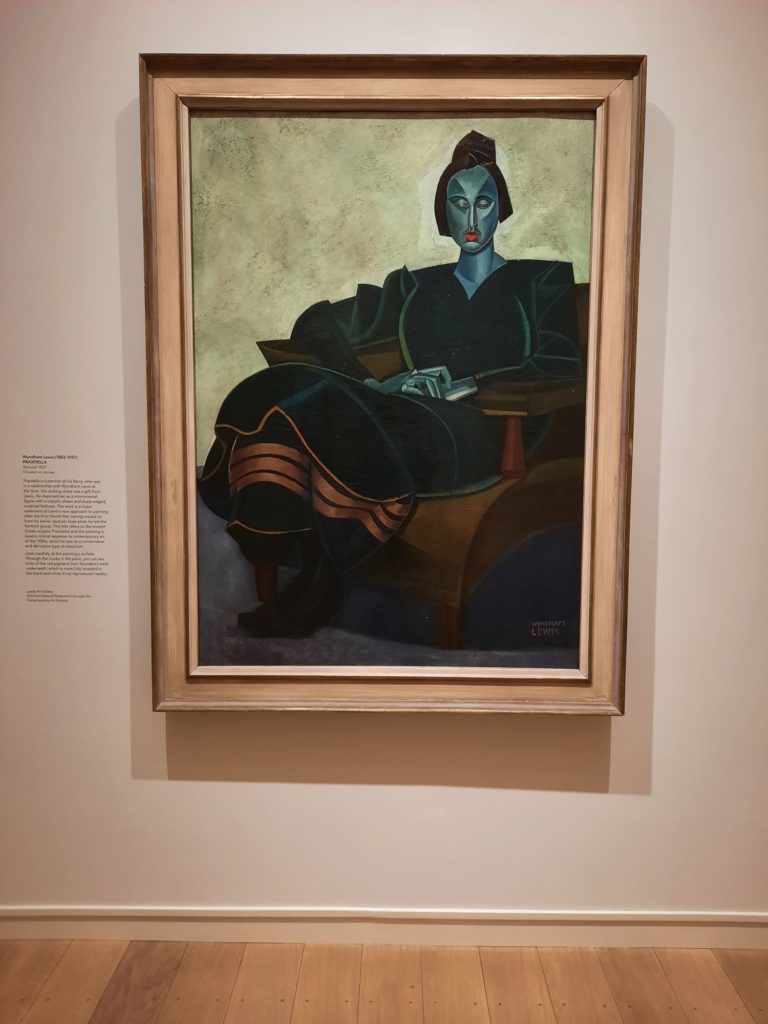
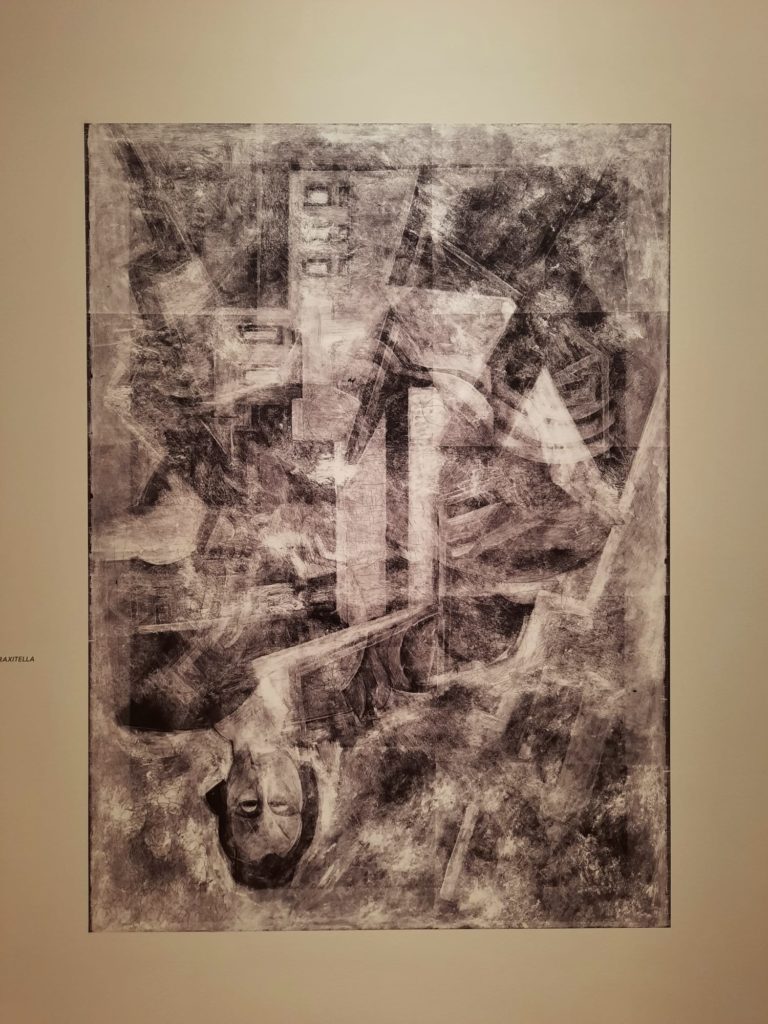
Helen Saunders: Modernist Rebel
Onwards now to the second of the two Courtauld exhibitions. It is comprised of work by Helen Saunders. Saunders, born in London in 1885, is perhaps not as well-known as she deserves to be. As well as the usual sexism faced by women in the art world, there are several biographical reasons for this. The movement with which she was connected, Vorticism, was short-lived. She mostly withdrew from exhibiting after some early success. A lot of her work was destroyed when her flat was badly damaged in the Blitz. And when invited to contribute to an exhibition at the Tate in the 1950s, she couldn’t as the only painting she thought worth including had been stolen. Rather a hard time of it.
The Courtauld came into some of her work in 2016 in the form of a donation by a relative, Brigid Peppin. This one-room exhibition has a selection of these and other works, both Vorticist and not, created over 25 years. It positions her as a pioneer of abstraction, and overlooked modern painter. The works are interesting, some slightly Cubist and fun such as a painting of a jazz band. Others conform more to the Vorticist preoccupation with warfare and the machine age: monochromatic with strong lines.
The most remarkable thing about this exhibition, however, is that the most interesting bit isn’t even part of it! You have to go one floor up to find A Modern Masterpiece Uncovered: Wyndam Lewis, Helen Saunders and Praxitella. Lewis and Saunders started out as friends but didn’t remain so. So when Lewis needed a canvas for Praxitella, a portrait of Iris Barry, he reused a painting by his former friend. The display outlining this rediscovery, the work of Courtauld Institute students, should not be missed.
Helen Saunders: Modernist Rebel is included with a gallery ticket, whereas Fuseli and the Modern Woman incurs an additional charge.
Salterton Arts Review’s rating: 3/5
Helen Saunders: Modernist Rebel on until 29 January 2023
Trending
If you see this after your page is loaded completely, leafletJS files are missing.

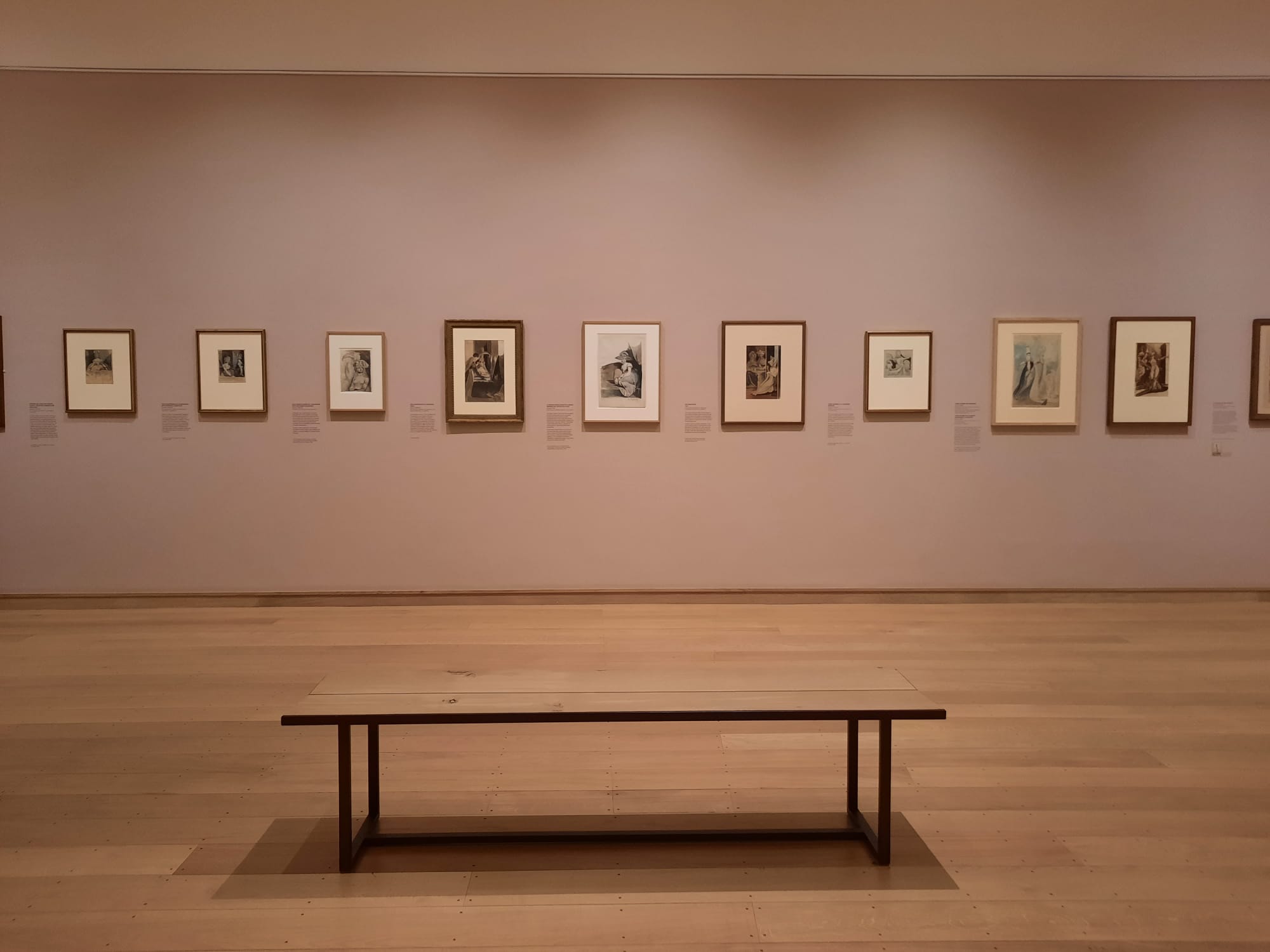
Gosh, what a visual contrast between the languid Fuseli and the hard lines of Saunders. The Nightmare is a virtuoso painting and it’s interesting to see the drawings of the same man who clearly liked women’s curves. I didn’t feel like the other paintings told me much about Saunders other than perhaps a manifesto she might have. The woman in a dark dress is very impressive though – I wonder what the sitter thought when they saw it!
Yes it really felt like changing gears between the two. And really a shame that we can’t get to know Saunders better because so many of her works were destroyed or lost. But yes Vorticists generally seem to be mostly about the manifesto… I thought it was very rude to paint over someone’s work just because you’re not friends with them any more, but that particular work really was in a different league – somewhat conflicting!